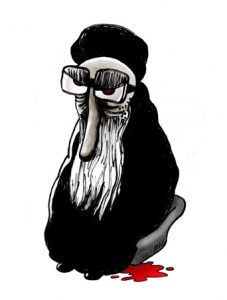Iranian regime hangs innocent prisoners as it nears its end…
“I am innocent and I had to confess under the torture.”
These were the last words of Mohammad Salas, who was executed by the Iranian regime authorities at dawn on 18 June 2018.
Mohammad Salas was a 51-year-old bus driver from one of Iran’s largest Sufi communities, the Nemattolah Gonabadi. He was arrested on 19 February 2018 while taking part in a protest against Sufi repression which turned violent after regime security forces resorted to beatings and the use of live ammunition, water cannons and tear gas to disperse the crowd.
Accused of killing 3 policemen during the protests, Mohammad Salas’s attorney, Ms. Zaynab Taheri, stated several times that “We have many documents indicating Mohammad Salas is innocent”.
The sole piece of evidence used to convict him was a “confession” that Mohammad Salas said was forcibly extracted after he was severely beaten by police officers. He later retracted his “confession”, but the Supreme Court rejected his request for a judicial review.
Vengeance at any cost rather than justice…
In spite of an international campaign by human rights organizations, Amnesty International in particular, calling for this execution to be stopped, it appears that the Iranian authorities have been more interested in vengeance at any cost than in justice.
Ramin Hossein Panahi, the next victim of the Iranian regime killing machine?
The Iranian regime killing machine continues to take more lives…
Ramin Hossein Panahi’s death penalty is politically motivated and he may be executed at any moment.
Mr. Panahi was arrested in June last year for alleged membership of the Kurdish nationalist group, Komala, and was held in solitary confinement until January 2018. His family received no information about his fate or whereabouts for four months after his arrest.
Ahmadi Niaz, lawyer for the Kurdish political prisoner, Panahi, who is currently on death row, has said in a statement that the Iranian authorities had mistreated Panahi in prison after his arrest while injured following controversial armed clashes last year in Sanandaj, the capital of the Kurdistan province in Iran.
Lebanon Facilitates Hezbollah Fighter’s Travel Out Of Middle East To Create Terror In West
International pressure along with an extensive campaign by Iranian social media users seem to have been behind the recent delay of his execution, which was scheduled to take place at Sanandaj prison before dawn on 3 May.
Amnesty Press announced on 5 May 2018 that Ramin Hossein Panahi’s death sentence violates international law as there is no evidence linking him to activities involving intentional killing.
#RaminHosseinPanahi is no longer at imminent risk of execution today in #Iran thanks to public pressure and advocacy efforts!
We must continue to take action & call on Iranian authorities to quash his death sentence & conviction@HassanRouhani #SaveRamin #SaveRaminHosseinPanahi pic.twitter.com/yIe8aTNuQj
— Amnesty Actions (@Amnesty_Actions) May 3, 2018
Recently, on 18 June 2018 UN human rights experts have made a new call to Iran to annul the death sentence imposed on Ramin Hossein Panahi.
Ramin Hossein Panahi, has published an open letter to the public regarding the implementation of the “death penalty”, drawing on the history of Iran, from Constitutionalism to today, and stated that various governments regard such a penalty as “the most fearsome tool for the elimination of dissents.”
This letter states:
“Taking the life of human beings by death penalty is one of the most ancient methods of punishment. Throughout the history of Iran’s legitimization, all central governments including the constitutional government (which could have ended in a democratic system) have adopted the death penalty as a tool to eliminate their oppositions.”
Approaching an end to execution and all forms of human rights abuse in Iran?
In the case of the current Iranian regime, execution is used primarily as a means to an end, to keep the disaffected citizens in check, a sharp reminder that dissidence and opposition will have dire consequences.
Iran Executes Sufi Member After Forced Confession, Despite International Outcry
While the regime has tried to sugarcoat their action and sell it to the rest of the world as religious retribution, on scratching the surface and going a little deeper, it is clear it is not just a mere form of punishment, but more an instrument for spreading fear among its citizens.
Even in China, with a population 17 times larger than Iran, and a regime that is by far the world’s leading advocate of the death penalty, there are hardly any cases of public hanging or juvenile execution.
Iran is second only to China in its number of executions, and the majority who receive death sentences have been convicted of drug-related crimes, or opposition to the Iranian regime.
Since coming to the US Presidency, Trump has withdrawn the nuclear agreement forged in 2015 between Iran and the world powers and repeatedly addressed the Islamic Republic as the greatest menace facing the Middle East. This is good news!
Iran’s clerical dictatorship is at an impasse, the product of years of steadfast perseverance of the people of the Iranian diaspora combined with the new horizon which has emerged through the uprisings in December and January inside the country itself. It is these ongoing and widespread protests in cities all around Iran, which have led to President Trump also voicing his support for the people of Iran and their clear desire for change, that are going to answer the question of regime change by the Iranian resistance.


